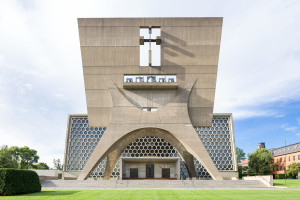Breuer’s Abbey
July 19, 2016
Hours gone: 45
Miles driven: 1494
Images taken: 561
The numbers above give a statistical snapshot of my journey from Michigan to Minnesota and back, almost solely for the purpose of documenting another Brutalist building; not to mention the fact that I was awake for 24 hours straight at one point. In my opinion, it was all worth it. But enough about me.
St. John’s Abbey is a Benedictine monastery in Collegeville, Minnesota which was founded in 1856. In 1950, twelve architects were approached for a new church and campus plan for St. John’s University. One of the competing architects was rising Bauhaus star Marcel Breuer, whose master plan featured a number of new buildings for the campus, including a church, monetary wing, residence halls, library, and science center.
Breuer’s main attraction is the church and bell banner that are both prime examples of the sculptural possibilities when using concrete. The banner houses five large bells and a 12 foot tall wooden cross made with locally sourced white oak. Whether you are religious or not, this place of worship (as well as Breuer’s church in west Michigan) is bound to humble just about anyone that witnesses its presence.
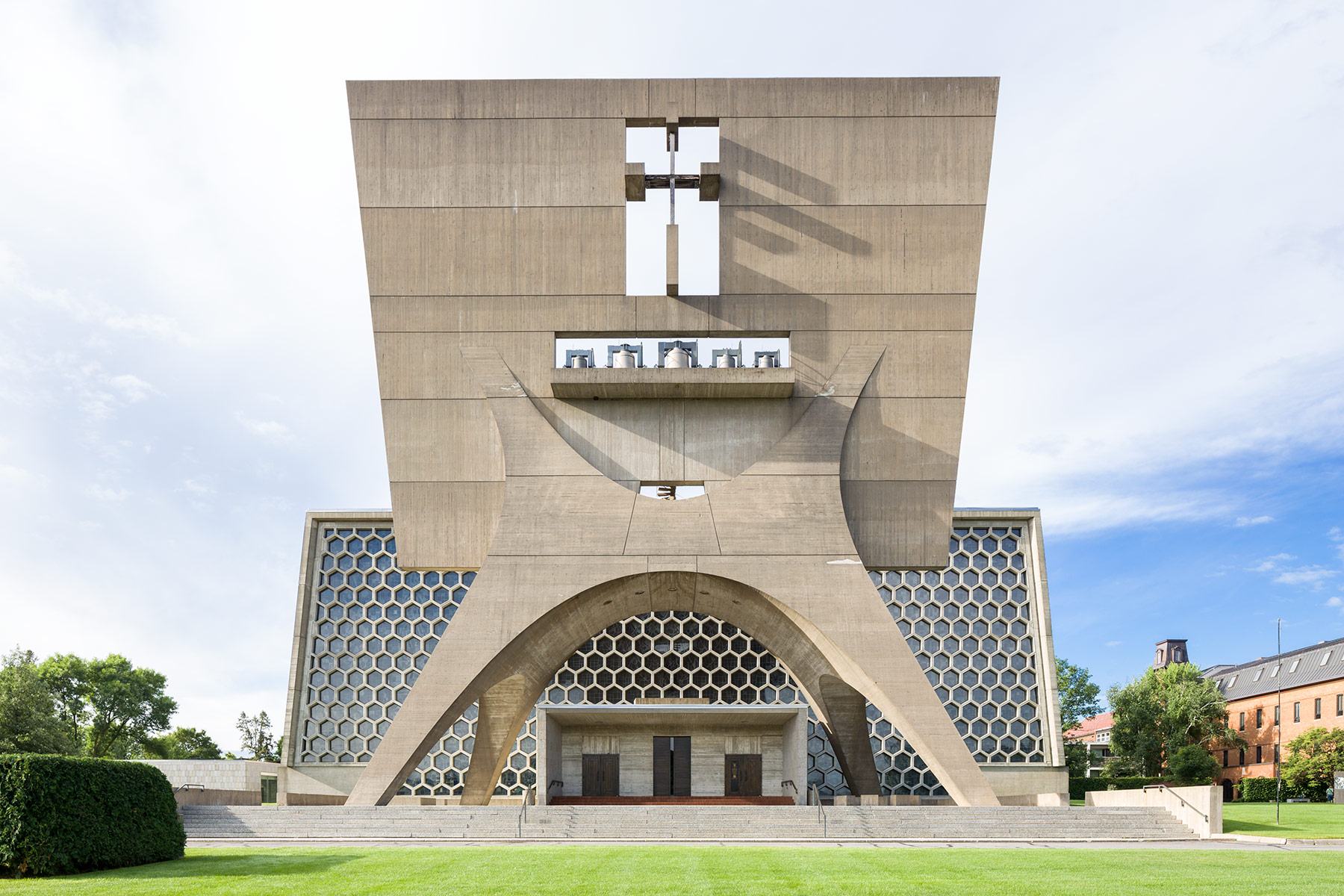
Exterior photograph of St. John’s Abbey Church in Collegeville, MN by architect Marcel Breuer. Photo by Jason R. Woods.
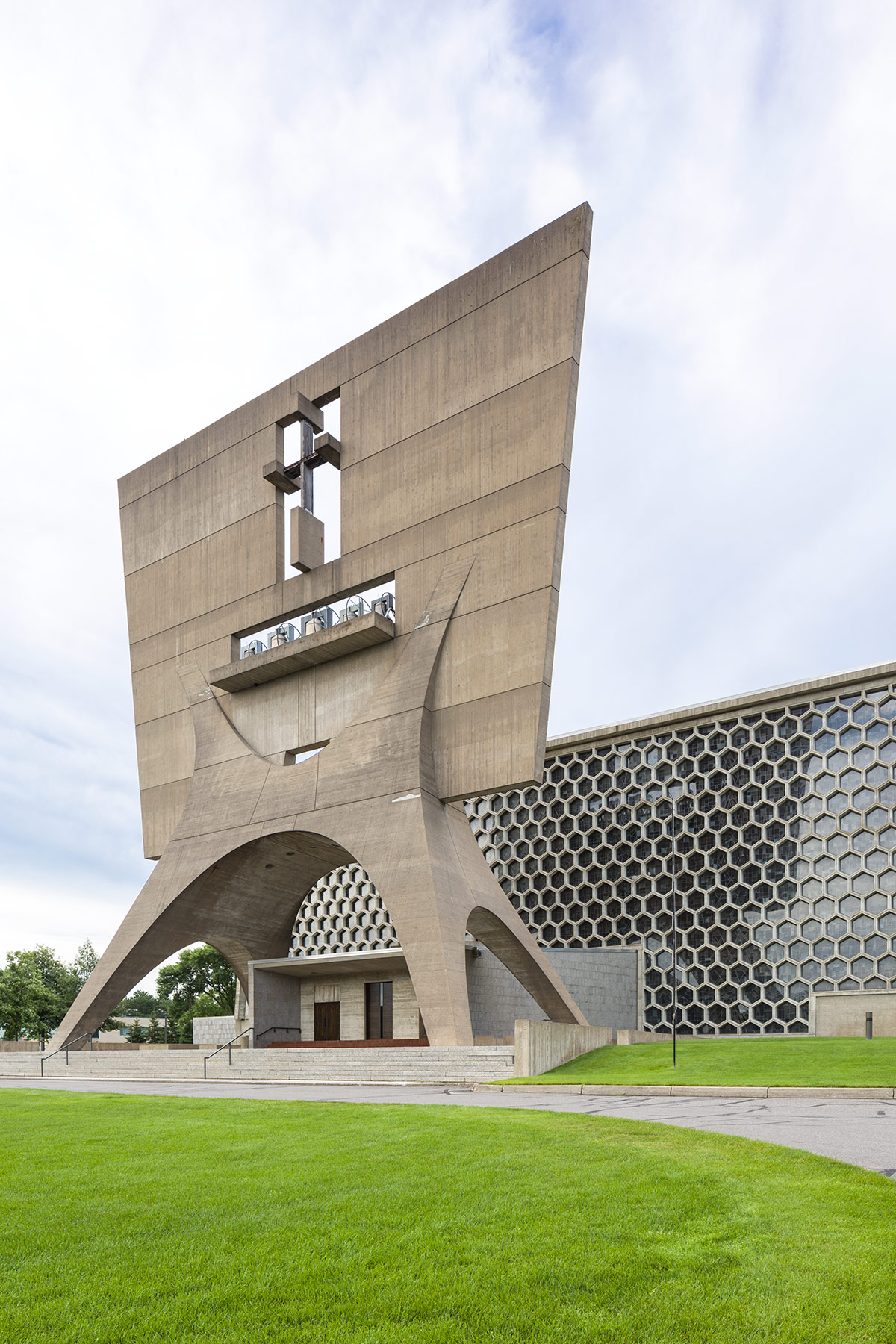
Exterior photograph of St. John’s Abbey Church in Collegeville, MN by architect Marcel Breuer. Photo by Jason R. Woods.
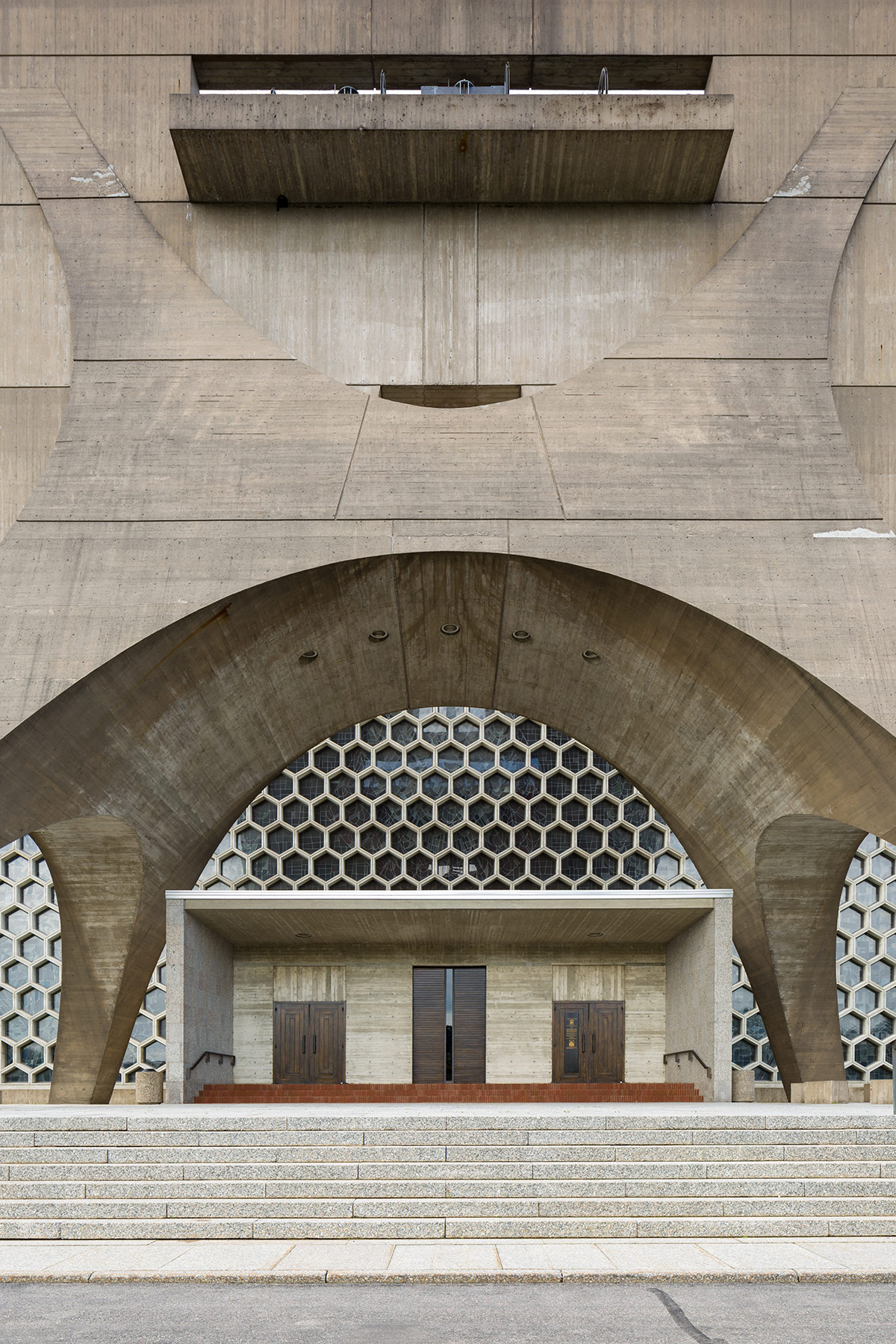
Exterior photograph of St. John’s Abbey Church in Collegeville, MN by architect Marcel Breuer. Photo by Jason R. Woods.
The north facade of the church is made of 430 hexagonal pieces of stained glass framed by concrete and is one of the largest stained glass murals in the U.S.. Since it primarily receives indirect sunlight, Breuer designed the massive banner to also serve as a reflector, bouncing additional light towards the stained glass wall.
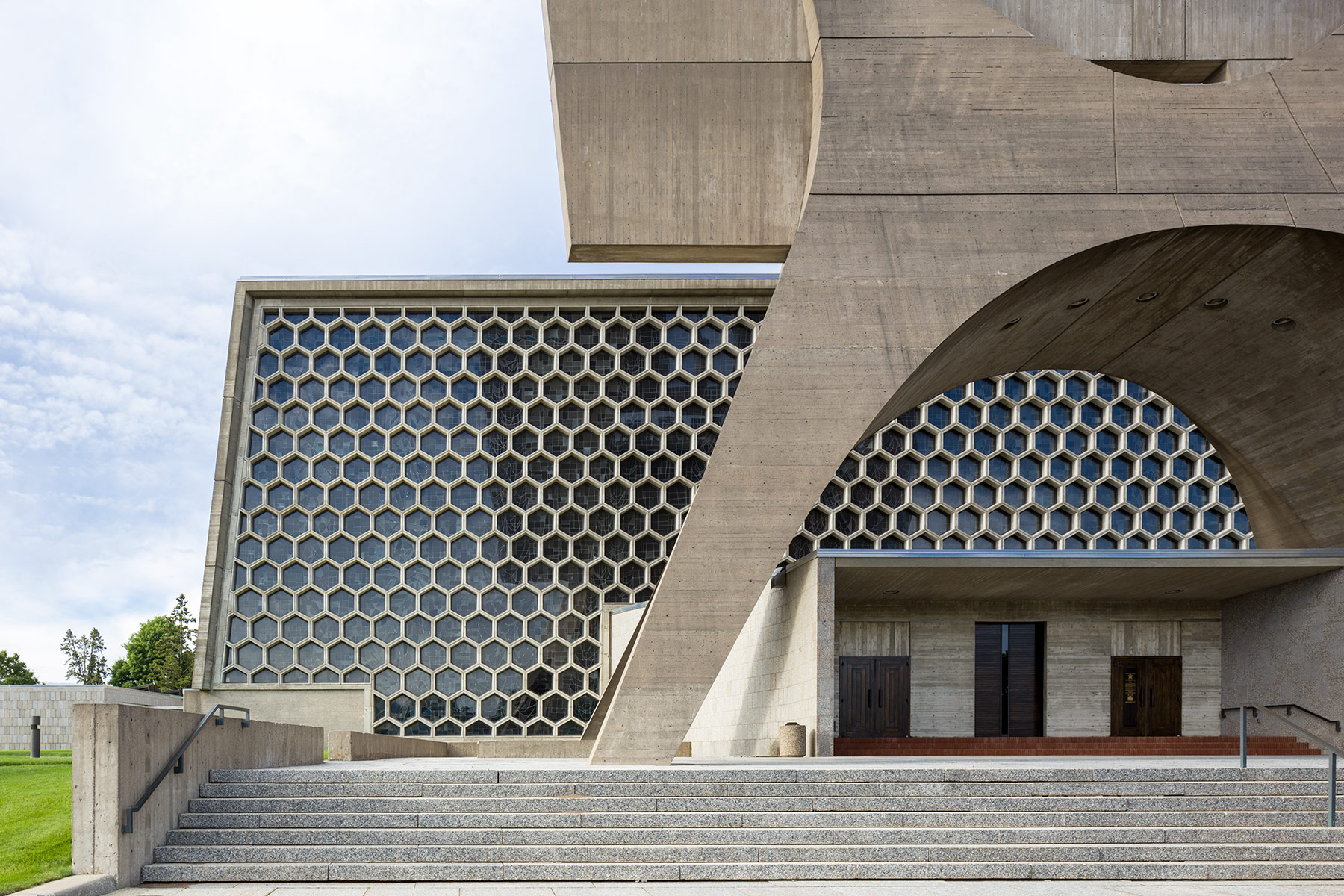
Exterior photograph of St. John’s Abbey Church in Collegeville, MN by architect Marcel Breuer. Photo by Jason R. Woods.
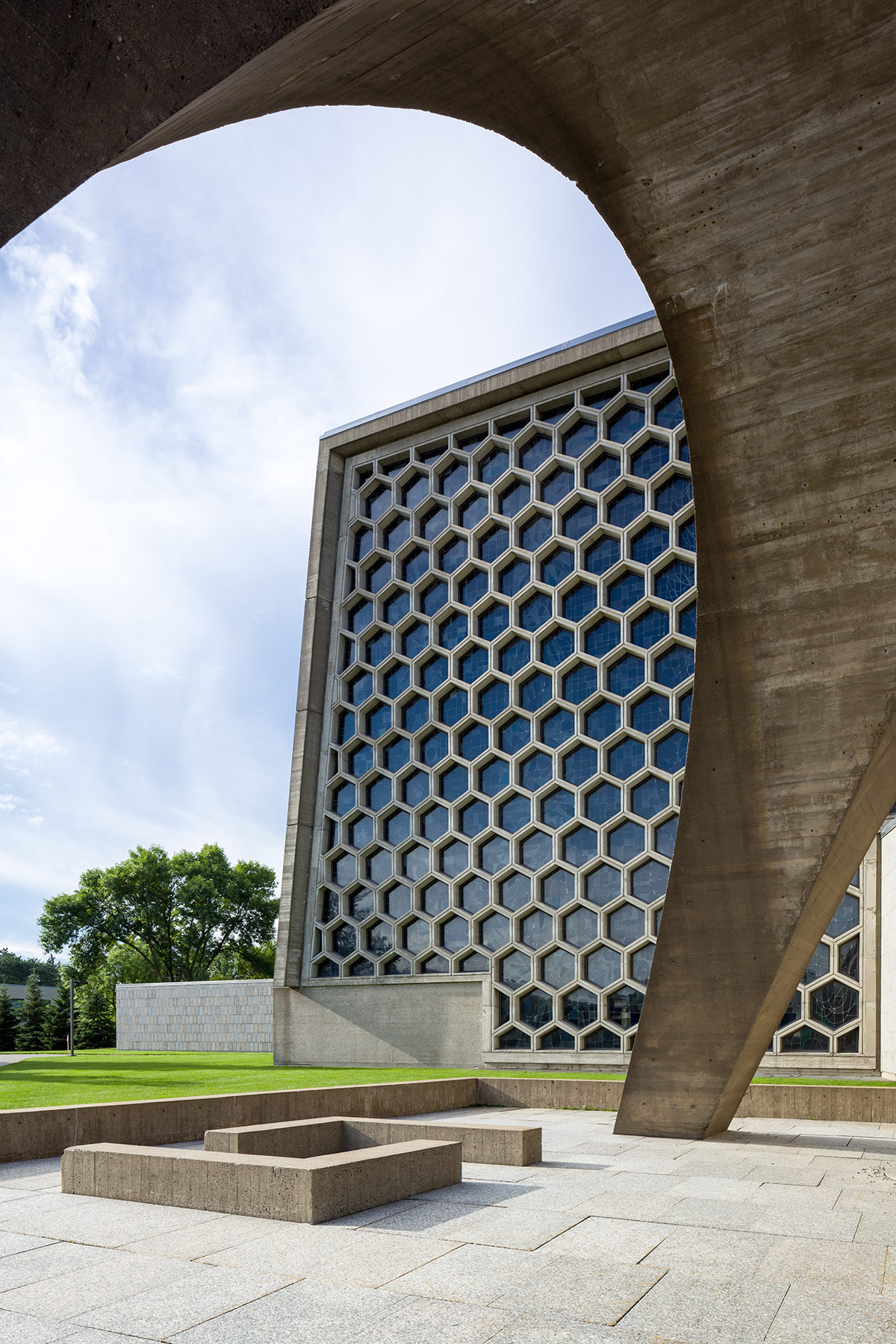
Exterior photograph of St. John’s Abbey Church in Collegeville, MN by architect Marcel Breuer. Photo by Jason R. Woods.
The interior of the church is a grand illustration of design and engineering, neatly wrapped in a package filled with religious symbolism. For example, there are twelve folds in the walls and ceiling, representing the twelve apostles, and the stained glass wall’s hexagonal structure serves as a metaphor to the strength of the community at St. John’s. The structure of the church is made of cast-in-place concrete, and is evident by the imprint of the wooden frames that were used during construction, which adds a certain amount of organic texture to an otherwise harsh material.

Interior photograph of St. John’s Abbey Church in Collegeville, MN by architect Marcel Breuer. Photo by Jason R. Woods.
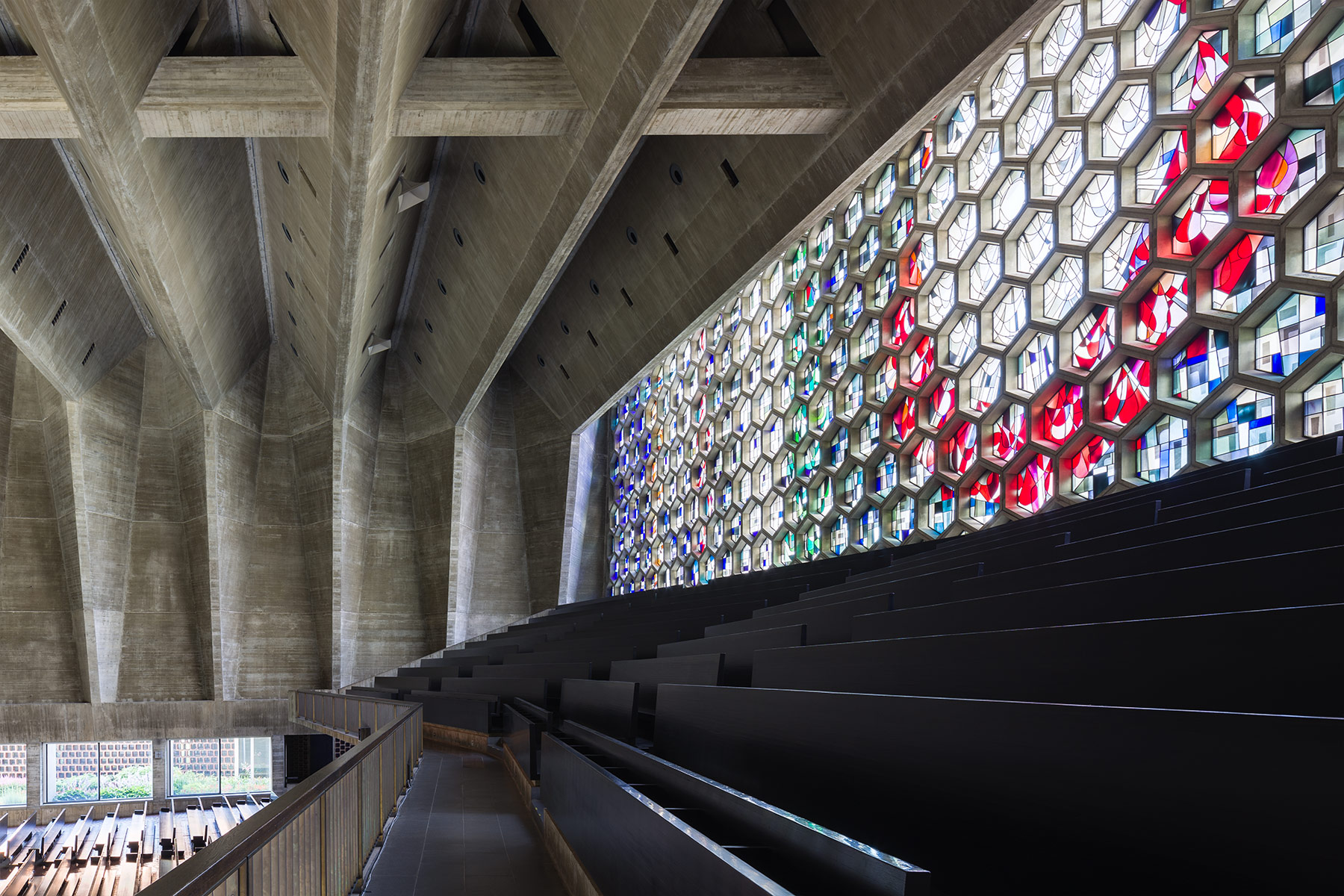
Interior photograph of St. John’s Abbey Church in Collegeville, MN by architect Marcel Breuer. Photo by Jason R. Woods.

Interior photograph of St. John’s Abbey Church in Collegeville, MN by architect Marcel Breuer. Photo by Jason R. Woods.
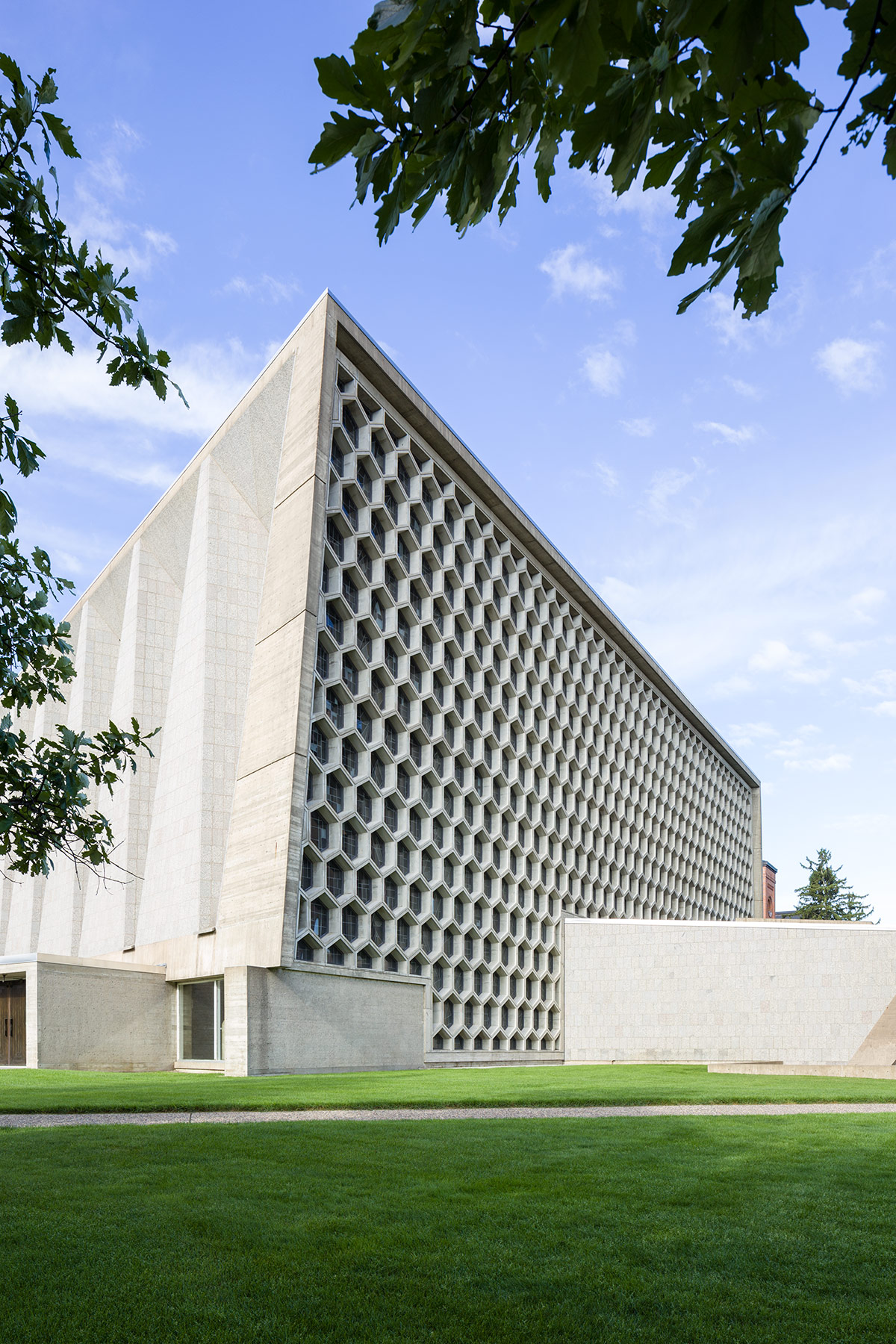
Exterior photograph of St. John’s Abbey Church in Collegeville, MN by architect Marcel Breuer. Photo by Jason R. Woods.
